Balkinization
an unanticipated consequence of
Jack M. Balkin
Balkinization Symposiums: A Continuing List
E-mail:
Jack Balkin:
jackbalkin at yahoo.com
Bruce Ackerman
bruce.ackerman at yale.edu
Ian Ayres
ian.ayres at yale.edu
Corey Brettschneider
corey_brettschneider at brown.edu
Mary Dudziak
mary.l.dudziak at emory.edu
Joey Fishkin
joey.fishkin at gmail.com
Heather Gerken heather.gerken at yale.edu
Abbe Gluck abbe.gluck at yale.edu
Mark Graber
mgraber at law.umaryland.edu
Stephen Griffin
sgriffin at tulane.edu
Jonathan Hafetz
jonathan.hafetz at shu.edu
Jeremy Kessler
jkessler at law.columbia.edu
Andrew Koppelman
akoppelman at law.northwestern.edu
Marty Lederman
msl46 at law.georgetown.edu
Sanford Levinson
slevinson at law.utexas.edu
David Luban
david.luban at gmail.com
Gerard Magliocca
gmaglioc at iupui.edu
Jason Mazzone
mazzonej at illinois.edu
Linda McClain
lmcclain at bu.edu
John Mikhail
mikhail at law.georgetown.edu
Frank Pasquale
pasquale.frank at gmail.com
Nate Persily
npersily at gmail.com
Michael Stokes Paulsen
michaelstokespaulsen at gmail.com
Deborah Pearlstein
dpearlst at yu.edu
Rick Pildes
rick.pildes at nyu.edu
David Pozen
dpozen at law.columbia.edu
Richard Primus
raprimus at umich.edu
K. Sabeel Rahmansabeel.rahman at brooklaw.edu
Alice Ristroph
alice.ristroph at shu.edu
Neil Siegel
siegel at law.duke.edu
David Super
david.super at law.georgetown.edu
Brian Tamanaha
btamanaha at wulaw.wustl.edu
Nelson Tebbe
nelson.tebbe at brooklaw.edu
Mark Tushnet
mtushnet at law.harvard.edu
Adam Winkler
winkler at ucla.edu
Compendium of posts on Hobby Lobby and related cases
The Anti-Torture Memos: Balkinization Posts on Torture, Interrogation, Detention, War Powers, and OLC
The Anti-Torture Memos (arranged by topic)
Recent Posts
Judicial Remedies and Structural Constitutional Violations
Just A Few Blogs
ACS Blog
Alas, a Blog
Althouse
Arts and Letters Daily
Atrios (Eschaton)
Bill of Health
Buzzflash.com
Buzz Machine
Cato at Liberty
Juan Cole (Informed Comment)
Concurring Opinions
The Constitution in 2020
Corrente
Crooked Timber
Daily Howler
Daily Kos
Dana Boyd
Brad DeLong
Digby (Hullabaloo)
Discriminations
Daniel Drezner
Kevin Drum (Mother Jones)
Electrolite
En Banc
Eunomia (Daniel Larison)
Fafblog
Michael Froomkin (Discourse.net)
GovLab (Beth Noveck)
Rick Hasen (Election Law)
History News Network
How Appealing
Ignatz (Sam Heldman)
The Importance of (Ernie Miller)
Infolaw
Instapundit
International Economic Law and Policy Blog
IntLawGrrls
Jacob Levy
Jesus' General
Jurisdynamics
The Kitchen Cabinet
Mark Kleiman
Law Blog Central
Larry Lessig
Lawyers, Guns and Money
Liberal Oasis
Brian Leiter's Law School Reports
The Leiter Reports
Marginal Revolution
Megan McArdle
Memeorandum
Metafilter
Mirror of Justice
The New Republic
Newseum
No More Mister Nice Blog
Brendan Nyhan
Opinio Juris
Orcinus
The Originalism Blog
Pandagon
Passport (Foreign Policy)
Overcoming Bias
Political Animal (Washington Monthly)
Political Theory Daily Review
Political Wire (Taegan Goddard)
The Poor Man
Virginia Postrel
Prawfsblawg
Public Reason
Jonathan Rauch
Raw Story
Redstate
ReligiousLeftLaw.com
Reporters Committee For Freedom of the Press
Reproductive Rights Blog
Rothman's Roadmap to the Right of Publicity
SCOTUS Blog
Seeing the Forest
Clay Shirky
The Shifted Librarian
The Situationist
Larry Solum (Legal Theory)
Andrew Sullivan
Talking Points Memo
Talk Left
Tapped
Tbogg
TechPresident
The Paper Chase (Jurist)
Tom Paine
Tom Tomorrow (This Modern World)
Eve Tushnet
Uggabugga
University of Chicago Law School Faculty Blog
Unqualified Offerings
The Volokh Conspiracy
War and Piece (Laura Rozen)
Wampum
Oliver Willis
Wonkette
Written Description
Matthew Yglesias
Yin
Your Choice of Feeds
1. XML
powered by
2. Atom Feed
3. RSS 2.0
Judicial Remedies and Structural Constitutional Violations
Guest Blogger
For the Balkinization symposium on Aziz Huq, The Collapse of Constitutional Remedies (Oxford University Press, 2021). Rachel Bayefsky Professor Aziz Huq’s The Collapse
of Constitutional Remedies provides a terrific 360-degree tour of the federal
courts’ treatment of judicial remedies for constitutional violations. Huq deftly traverses a range of domains, from
suits against police officers to habeas petitions to antidiscrimination
claims. Highlighting patterns in federal
courts’ limitations on remedies in numerous areas, Huq demonstrates the
analytic benefits that redound from observing cross-doctrinal patterns instead
of viewing each aspect of the law in isolation.
Further, Huq places federal courts’ treatment of constitutional remedies
in rich historical perspective, emphasizing the evolution of judicial decision-making
in connection with social and political trends. One of the book’s many interesting
contributions—and the point on which I will concentrate—is its argument that federal
courts have taken different approaches toward different kinds of constitutional
violations. According to Huq, federal
courts have restricted judicial remedies for constitutional violations stemming
from police violence or infringements of individuals’ civil rights. At the same time, federal courts have been
more willing to provide remedies in suits seeking to vindicate structural
constitutional principles, such as the separation of powers or federalism. The latter types of suits are often litigated
by companies objecting to administrative agency regulation. To
be sure, each doctrine Huq describes has its own structure and history. There may be doctrinally specific
explanations for the availability or absence of constitutional remedies in any
given circumstance. At the same time, there
is great value in taking account of broader trends, as Huq does when he
identifies distinctions in the treatment of different types of constitutional
claims. In
considering such distinctions, however, it is important to disaggregate two issues:
(1) federal courts’ willingness to provide an effective remedy; and (2) federal
courts’ willingness to reach the merits of the legal claims. With respect to effective remediation, one
might question the extent to which even those challenging structural
constitutional violations receive considerable relief. As Huq notes (142), criminal defendants
challenging their convictions on structural constitutional grounds do not
necessarily escape government coercion when a federal court agrees that the
statute of conviction is unconstitutional.
For instance, these defendants may remain subject to state
prosecution. Recent
cases involving structural violations provide all the more reason to ask about
the real-world relief that parties secure.
In the 2020 Supreme Court case Seila Law LLC v. Consumer Financial
Protection Bureau, for example, the firm Seila Law received an
investigative demand from the CFPB and, in objecting to that demand, challenged
the constitutionality of the CFPB’s structure.
In particular, Seila Law took issue with a statutory restriction on the President’s
ability to remove the CFPB Director from office. The Supreme Court, after agreeing with Seila
Law that the statutory provision restricting removal was unconstitutional,
severed that provision from the rest of the law establishing the CFPB and remanded
for the court of appeals to consider whether the investigative demand the CFPB
had issued to Seila Law was validly ratified by an official who was not afflicted
by the same constitutional infirmity. On
remand, the Ninth Circuit held that the investigative demand had been, in the
end, validly ratified. From Seila Law’s
perspective, the Supreme Court’s ruling may not have achieved all that much. To
take another example of limited remediation for parties in a structural
constitutional challenge: In Free
Enterprise Fund v. Public Company Accounting Oversight Board, the Supreme
Court in 2010 held
statutory restrictions on the removal of members of a government agency to be
unconstitutional but severed these restrictions from the rest of the law creating
the agency. Those challenging the
restrictions were therefore entitled not to “broad injunctive relief against
the [agency’s] continued operations,” but instead to “declaratory relief
sufficient to ensure that the reporting requirements and auditing standards to
which they are subject will be enforced only by a constitutional agency
accountable to the Executive.” The Court
provided no indication that the challengers would be free from the relevant
reporting requirements and auditing standards. Two
cases that the Supreme Court issued just last Term underscore the elusiveness
of expansive remedies for some parties challenging structural constitutional
violations. In Collins v. Yellen,
a group of shareholders of Fannie Mae and Freddie Mac argued that the structure
of the Federal Housing Finance Agency (FHFA) violated the separation of powers
because the FHFA is led by a single director removable by the President only
“for cause.” The Court agreed
that the FHFA’s structure violated the separation of powers but remanded for
consideration of whether the unconstitutional removal restriction “inflict[ed]
compensable harm.” Presumably, the court
of appeals on remand may decide that the removal restriction did not. In that event, it is unclear what the
shareholders will have gained beyond the constitutional ruling that the FHFA’s
structure violates the separation of powers. Another
case last Term, United States v. Arthrex, involved an Appointments
Clause challenge to the structure of the Patent Trial and Appeal Board, an
executive adjudicatory body. The Board
held an Arthrex patent to be invalid, and Arthrex challenged the
constitutionality of appointments provisions for the Board’s Administrative
Patent Judges (APJs). The Supreme Court agreed
with Arthrex that the Board’s structure was inconsistent with the Constitution,
because the nature of the APJs’ responsibilities was not compatible with their
method of appointment. But the Court declined
to dismiss the administrative proceeding in which Arthrex’s patent was held
invalid. Instead, the Court held that APJs’
decisions must be subject to review by the Director of the Patent and Trademark
Office (PTO), and in those circumstances the statute was constitutional. The Court then remanded to the acting
Director of the PTO to decide whether to rehear the case. A few months later, an official performing
functions of the Director denied Arthrex’s request to review the case; that
denial is now on appeal to the U.S. Court of Appeals for the Federal Circuit. The bottom line: Any relief that would affect the validity of Arthrex’s
patent seems quite far away. Relief
for parties challenging structural constitutional violations, therefore, may be
limited in practice. True, this point may
be most applicable to recent structural challenges that the Supreme Court has decided. For example, many of today’s removal cases
involve situations in which the President has not tried to remove an official. By contrast, an official who seeks back pay
after the President attempts removal (as in the 1935 case
Humphrey’s Executor) could have a better shot at a more robust
remedy. Nonetheless, significant cases
in the past few years suggest that relief for structural constitutional
violations is at times ephemeral. One
might contend that a court order requiring government action to be carried out
by a constitutionally legitimate officer is a meaningful remedy even if the
substance of government regulation remains the same. In fact, I have argued elsewhere
that a declaration that one’s constitutional rights are being violated may
itself constitute proper federal judicial relief because it could redress dignitary
harm. Perhaps federal courts today are especially
prepared to treat “intangible” remedies as genuine forms of relief in the particular
context of structural constitutional challenges. If such an approach exists, however, it
requires justification. Although
parties raising structural constitutional objections may not receive anything close
to the remedies they seek, federal courts may still treat their suits
differentially in another sense.
Specifically, federal courts may be more willing to reach the merits of structural
claims, at a minimum those involving removal.
The Supreme Court in Seila Law stated that “a litigant
challenging governmental action as void on the basis of the separation of
powers is not required to prove that the Government’s course of conduct would
have been different in a ‘counterfactual world’ in which the Government had
acted with constitutional authority.” Although
this statement can be interpreted in multiple ways, it raises questions about the
threshold requirement of constitutional standing (consistent with Huq’s
observations, 121-22). Are regulated
parties’ financial harms “fairly traceable” to a structural constitutional
violation if there is no indication that a properly removable government
regulator would have acted differently? A
standing problem that might have been fatal in another suit seemed to have less
bite in the structural removal setting. Times
could be changing. Recent separate
writings in the Supreme Court, particularly by Justice Thomas, suggest an interest
in taking a closer look at justiciability and remedies questions in structural constitutional
cases. Dissenting in Arthrex,
Justice Thomas doubted the Court’s power to issue a remedy given that “[n]o
constitutional violation has occurred” if one accepted the Court’s view that
granting the agency director the power to review Board decisions rendered the
statute constitutional. Concurring in Collins,
Justice Thomas questioned whether the mere existence of an unlawful removal
restriction was sufficient for a court to rule in favor of those challenging
that restriction. In his view, parties must
instead show that the actual government action at issue was unlawful. Justice Thomas’s separate writings—and arguments
by Professor John Harrison that Justice Thomas referenced—may provide fodder
for the view that federal courts should be more reluctant to decide the merits
of structural constitutional challenges when the injury is ill defined or when the
relationship between injury and remedy is nebulous. Justice
Thomas’s increased attention to harm and remedy may be based on a formalist
approach, but those more pragmatically inclined have reason to focus on these
issues as well. When federal courts
declare agency structures unconstitutional, as dissents by Justices Breyer
and Kagan
have argued, they risk overstepping the judicial role by imposing a particular
vision of political accountability that may not closely fit the incentives and
structures of the real world. The
concern about judicial overextension applies as well when courts decide to
sever statutes instead of declaring an entire scheme unconstitutional; federal
courts are arguably not well suited to restructuring the chains of command within
administrative agencies. Apprehension
about the judicial role in structural constitutional challenges may call
for enhanced use of the “passive virtues”—application of tools like standing
and mootness to limit the circumstances in which courts reach the merits of a
constitutional claim. At the least,
courts should not reach out to decide structural constitutional issues in cases
that do not cleanly present these questions. In
sum, Huq’s book provides invaluable context and insight as courts and scholars
debate federal courts’ proper approaches toward relief for constitutional
violations. Rachel
Bayefsky is an Associate Professor of Law at the University of Virginia School
of Law. You can reach her by email at rbayefsky@law.virginia.edu.
Posted
9:30 AM
by Guest Blogger [link]
Books by Balkinization Bloggers

Gerard N. Magliocca, The Actual Art of Governing: Justice Robert H. Jackson's Concurring Opinion in the Steel Seizure Case (Oxford University Press, 2025)

Linda C. McClain and Aziza Ahmed, The Routledge Companion to Gender and COVID-19 (Routledge, 2024)

David Pozen, The Constitution of the War on Drugs (Oxford University Press, 2024)

Jack M. Balkin, Memory and Authority: The Uses of History in Constitutional Interpretation (Yale University Press, 2024)
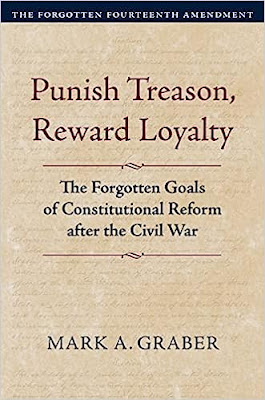
Mark A. Graber, Punish Treason, Reward Loyalty: The Forgotten Goals of Constitutional Reform after the Civil War (University of Kansas Press, 2023)
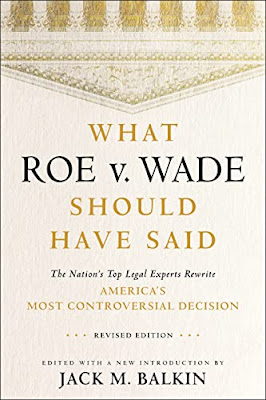
Jack M. Balkin, What Roe v. Wade Should Have Said: The Nation's Top Legal Experts Rewrite America's Most Controversial Decision - Revised Edition (NYU Press, 2023)

Andrew Koppelman, Burning Down the House: How Libertarian Philosophy Was Corrupted by Delusion and Greed (St. Martin’s Press, 2022)

Gerard N. Magliocca, Washington's Heir: The Life of Justice Bushrod Washington (Oxford University Press, 2022)
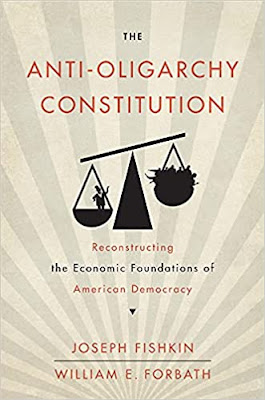
Joseph Fishkin and William E. Forbath, The Anti-Oligarchy Constitution: Reconstructing the Economic Foundations of American Democracy (Harvard University Press, 2022)
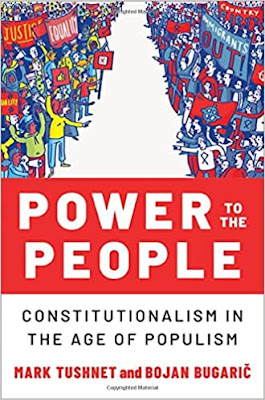
Mark Tushnet and Bojan Bugaric, Power to the People: Constitutionalism in the Age of Populism (Oxford University Press 2021).

Mark Philip Bradley and Mary L. Dudziak, eds., Making the Forever War: Marilyn B. Young on the Culture and Politics of American Militarism Culture and Politics in the Cold War and Beyond (University of Massachusetts Press, 2021).

Jack M. Balkin, What Obergefell v. Hodges Should Have Said: The Nation's Top Legal Experts Rewrite America's Same-Sex Marriage Decision (Yale University Press, 2020)

Frank Pasquale, New Laws of Robotics: Defending Human Expertise in the Age of AI (Belknap Press, 2020)

Jack M. Balkin, The Cycles of Constitutional Time (Oxford University Press, 2020)

Mark Tushnet, Taking Back the Constitution: Activist Judges and the Next Age of American Law (Yale University Press 2020).

Andrew Koppelman, Gay Rights vs. Religious Liberty?: The Unnecessary Conflict (Oxford University Press, 2020)

Ezekiel J Emanuel and Abbe R. Gluck, The Trillion Dollar Revolution: How the Affordable Care Act Transformed Politics, Law, and Health Care in America (PublicAffairs, 2020)

Linda C. McClain, Who's the Bigot?: Learning from Conflicts over Marriage and Civil Rights Law (Oxford University Press, 2020)
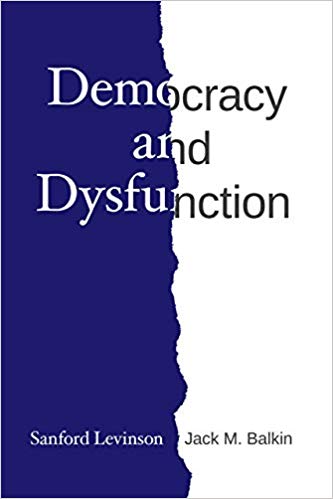
Sanford Levinson and Jack M. Balkin, Democracy and Dysfunction (University of Chicago Press, 2019)

Sanford Levinson, Written in Stone: Public Monuments in Changing Societies (Duke University Press 2018)

Mark A. Graber, Sanford Levinson, and Mark Tushnet, eds., Constitutional Democracy in Crisis? (Oxford University Press 2018)

Gerard Magliocca, The Heart of the Constitution: How the Bill of Rights became the Bill of Rights (Oxford University Press, 2018)

Cynthia Levinson and Sanford Levinson, Fault Lines in the Constitution: The Framers, Their Fights, and the Flaws that Affect Us Today (Peachtree Publishers, 2017)

Brian Z. Tamanaha, A Realistic Theory of Law (Cambridge University Press 2017)

Sanford Levinson, Nullification and Secession in Modern Constitutional Thought (University Press of Kansas 2016)

Sanford Levinson, An Argument Open to All: Reading The Federalist in the 21st Century (Yale University Press 2015)

Stephen M. Griffin, Broken Trust: Dysfunctional Government and Constitutional Reform (University Press of Kansas, 2015)

Frank Pasquale, The Black Box Society: The Secret Algorithms That Control Money and Information (Harvard University Press, 2015)

Bruce Ackerman, We the People, Volume 3: The Civil Rights Revolution (Harvard University Press, 2014)
Balkinization Symposium on We the People, Volume 3: The Civil Rights Revolution

Joseph Fishkin, Bottlenecks: A New Theory of Equal Opportunity (Oxford University Press, 2014)

Mark A. Graber, A New Introduction to American Constitutionalism (Oxford University Press, 2013)

John Mikhail, Elements of Moral Cognition: Rawls' Linguistic Analogy and the Cognitive Science of Moral and Legal Judgment (Cambridge University Press, 2013)

Gerard N. Magliocca, American Founding Son: John Bingham and the Invention of the Fourteenth Amendment (New York University Press, 2013)

Stephen M. Griffin, Long Wars and the Constitution (Harvard University Press, 2013)

Andrew Koppelman, The Tough Luck Constitution and the Assault on Health Care Reform (Oxford University Press, 2013)

James E. Fleming and Linda C. McClain, Ordered Liberty: Rights, Responsibilities, and Virtues (Harvard University Press, 2013)
Balkinization Symposium on Ordered Liberty: Rights, Responsibilities, and Virtues

Andrew Koppelman, Defending American Religious Neutrality (Harvard University Press, 2013)

Brian Z. Tamanaha, Failing Law Schools (University of Chicago Press, 2012)

Sanford Levinson, Framed: America's 51 Constitutions and the Crisis of Governance (Oxford University Press, 2012)

Linda C. McClain and Joanna L. Grossman, Gender Equality: Dimensions of Women's Equal Citizenship (Cambridge University Press, 2012)

Mary Dudziak, War Time: An Idea, Its History, Its Consequences (Oxford University Press, 2012)

Jack M. Balkin, Living Originalism (Harvard University Press, 2011)

Jason Mazzone, Copyfraud and Other Abuses of Intellectual Property Law (Stanford University Press, 2011)

Richard W. Garnett and Andrew Koppelman, First Amendment Stories, (Foundation Press 2011)

Jack M. Balkin, Constitutional Redemption: Political Faith in an Unjust World (Harvard University Press, 2011)

Gerard Magliocca, The Tragedy of William Jennings Bryan: Constitutional Law and the Politics of Backlash (Yale University Press, 2011)

Bernard Harcourt, The Illusion of Free Markets: Punishment and the Myth of Natural Order (Harvard University Press, 2010)

Bruce Ackerman, The Decline and Fall of the American Republic (Harvard University Press, 2010)
Balkinization Symposium on The Decline and Fall of the American Republic

Ian Ayres. Carrots and Sticks: Unlock the Power of Incentives to Get Things Done (Bantam Books, 2010)

Mark Tushnet, Why the Constitution Matters (Yale University Press 2010)
Ian Ayres and Barry Nalebuff: Lifecycle Investing: A New, Safe, and Audacious Way to Improve the Performance of Your Retirement Portfolio (Basic Books, 2010)
.jpg)
Jack M. Balkin, The Laws of Change: I Ching and the Philosophy of Life (2d Edition, Sybil Creek Press 2009)

Brian Z. Tamanaha, Beyond the Formalist-Realist Divide: The Role of Politics in Judging (Princeton University Press 2009)
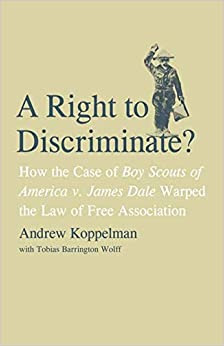
Andrew Koppelman and Tobias Barrington Wolff, A Right to Discriminate?: How the Case of Boy Scouts of America v. James Dale Warped the Law of Free Association (Yale University Press 2009)

Jack M. Balkin and Reva B. Siegel, The Constitution in 2020 (Oxford University Press 2009)
Heather K. Gerken, The Democracy Index: Why Our Election System Is Failing and How to Fix It (Princeton University Press 2009)

Mary Dudziak, Exporting American Dreams: Thurgood Marshall's African Journey (Oxford University Press 2008)

David Luban, Legal Ethics and Human Dignity (Cambridge Univ. Press 2007)

Ian Ayres, Super Crunchers: Why Thinking-By-Numbers is the New Way to be Smart (Bantam 2007)

Jack M. Balkin, James Grimmelmann, Eddan Katz, Nimrod Kozlovski, Shlomit Wagman and Tal Zarsky, eds., Cybercrime: Digital Cops in a Networked Environment (N.Y.U. Press 2007)
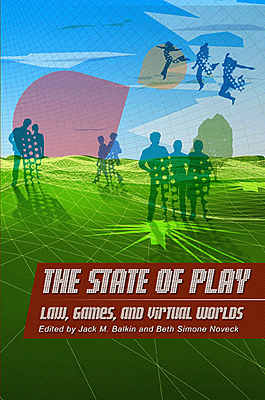
Jack M. Balkin and Beth Simone Noveck, The State of Play: Law, Games, and Virtual Worlds (N.Y.U. Press 2006)

Andrew Koppelman, Same Sex, Different States: When Same-Sex Marriages Cross State Lines (Yale University Press 2006)
Brian Tamanaha, Law as a Means to an End (Cambridge University Press 2006)
Sanford Levinson, Our Undemocratic Constitution (Oxford University Press 2006)
Mark Graber, Dred Scott and the Problem of Constitutional Evil (Cambridge University Press 2006)
Jack M. Balkin, ed., What Roe v. Wade Should Have Said (N.Y.U. Press 2005)
Sanford Levinson, ed., Torture: A Collection (Oxford University Press 2004)
Balkin.com homepage
Bibliography
Conlaw.net
Cultural Software
Writings
Opeds
The Information Society Project
BrownvBoard.com
Useful Links
Syllabi and Exams